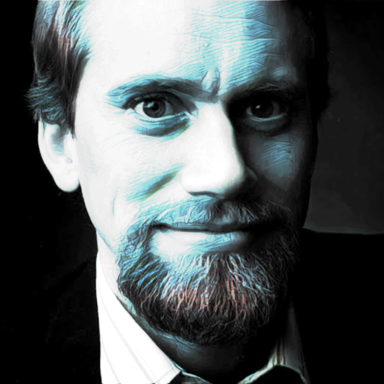
Decoding Media
By Carrie Cummings on Oct 01, 2013
Manhattan-based interactive shop Code and Theory is responsible for a chunk of the best facelifts in media. The full-service interactive agency has created online presences for some of the most well known media companies, and in a lot of cases, has helped them seamlessly transition from print to digital. We talked with cofounder and ECD Brandon Ralph about clients, briefs and his role in creating experiences that leave a big impression.
Code and Theory has a knack for creating digital storytelling experiences. You've worked with the biggest names in the journalism industry, designing online presences for The Daily Beast, Vogue, Interview and The Verge. How do you approach these projects to ensure that you maintain both the integrity and the aesthetic of the property?
Understanding the brand, the editorial voice and the audience is always at the forefront of our approach for any project. It's why we invest so much energy into the "define" phase. This is where we discover how they work, who their readers are and what they want/expect, which systems are working and which ones aren't, what are the areas for improvement, and what are the opportunities for innovation. An element of success is when someone lands on any page, and knows exactly what brand site they're on. Content is king, but the design should tell you where you are.
What is your role on big, visual projects?
A lot of what I do is to push clients to think beyond what they're used to and how they've always done things. Whether the solution is a combination of photography, video, or traditional creative I'm all about making sure the execution has a really clean, ownable design.
For a few clients, I'll actually do all of the photography, vision and creative direction, and figure out ways to push and lead the user through the content. Prioritization of content is also key. Because not all content is created equal, we're always focused on creating design paradigms that highlight the right content on the page.
How do you sell radical ideas and experiences to clients?
At the end of the day, good ideas sell themselves, especially when they're part yours and part the client's. If an idea or concept fits into what success looks like for the client, it's all worth it. You should never do something different just for the sake of doing something different. If the idea isn't rooted into the client's original brief, it usually means you're just doing it for yourself.
If it's a big, out-of-the-box idea we really believe in, we'll just build out the whole thing so that the client is on board from the very beginning. We're also big fans of sketching out ideas and concepts right in meetings, which I think speaks to how passionate we all are about our work. I think it's that work ethic that helps clients trust our creative instincts. In the end, we always take a collaborative approach with the client.
What is your dream brief?
My dream brief is one that comes to us early. Being there from the beginning means there are no limitations to the creative. It's more challenging to make something out of a creative concept that is already in existence, than to be there right at the start.
Related







